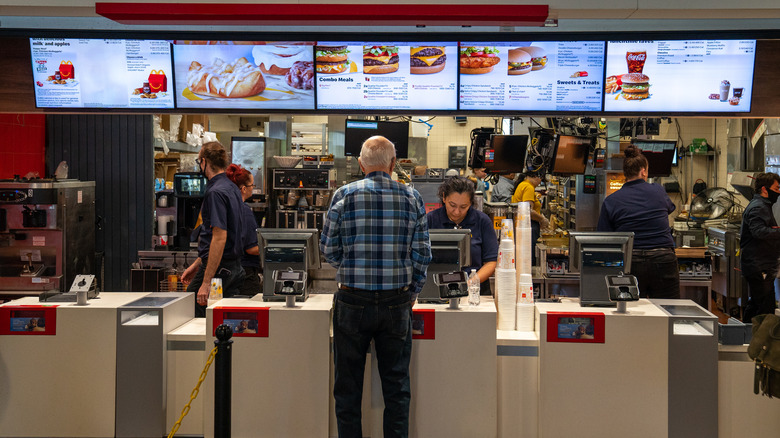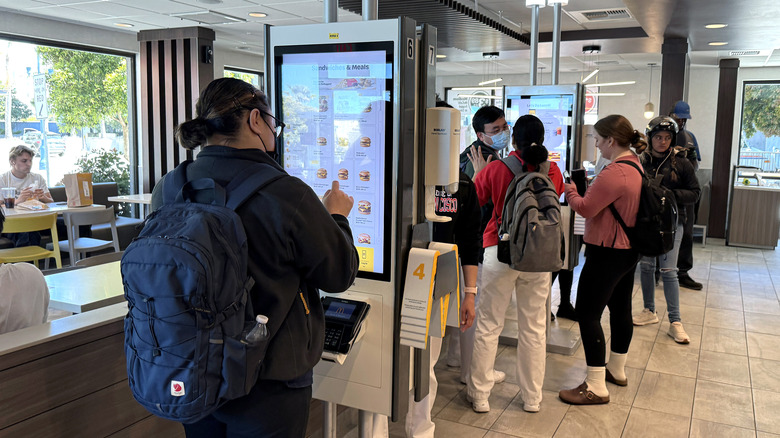How Fast Food Restaurants Quietly Make You Spend More Than You Planned
The 2020s haven't been kind to the restaurant industry. COVID forced over 100,000 restaurants in the United States out of business, and in the bounce-back, consumer habits changed, forcing restaurants to adapt. As a result, many eateries have had to pull out increasingly more tricks to drive business, trying hard to avoid the list of restaurant chains that have declared bankruptcy. Fast food joints specifically have adopted certain tactics that maximizes profits — and customer spending — in ways you might not expect.
One example of these subtle spending hacks is the use of self-serve kiosks. On the surface, many people enjoy these ordering machines: they free you up to order without having to speak to another human, and you can easily customize your meal to achieve all the fast food secret menu items your heart desires. While there's no doubting the convenience, these kiosks are also subtly getting you to spend more money. This is because the self-service machines are constantly pushing the up-sell on you as you order, asking, "Did you consider a drink? How about adding bacon to that burger, or a side of fries?" Not only does it entice you with additional items, it also shows a picture of them to whet your appetite.
Customers who buy at the kiosk spend on average 10% more than those who order in-person, according to Shake Shack CEO Randy Garutti, per Business Insider. And this is only the start — companies like Burger King are pursuing the massive expansion of these automated ordering systems, while also preparing for a future where digital ordering reigns supreme.
How restaurants manipulate customers for higher profits
While there's no doubt that the rising presence of self-serve kiosks are meant for more than just a customized experience, the exact psychological effectiveness on customers is not as clear. Some claim that the choose-your-own-adventure nature of the process allows customers to be more relaxed while ordering, perusing the menu at their leisure, while other studies show that the opposite is true. These tests say that customers ordering at kiosks tend to feel more pressure from the line building behind them, resulting in less experimenting with unfamiliar offerings, and even ordering less food in general in an effort to speed up the process.
But that dreaded order anxiety may ultimately work to the advantage of the restaurants' bottom line, as it mirrors efforts taken by chains like Nando's in the U.K. to make customers leave more quickly, thereby allowing more turnover and ultimately, more people ordering food. Nando's was called out for intentionally creating an environment that would drive diners to vacate quicker, through uncomfortable ambiance like loud, fast-paced music that subconsciously drives you to eat faster and get out so you can hear your friends speak.
On a related note, if you ever go into a place, whether fast food or otherwise, and wonder why the chairs are so aggressively uncomfortable, chances are it is designed that way for a similar reason. Hard wooden chairs or stools without backs discourage customers from getting too cozy, driving them out the door faster so other customers can take their seats, thereby increasing the restaurant's bottom line.


